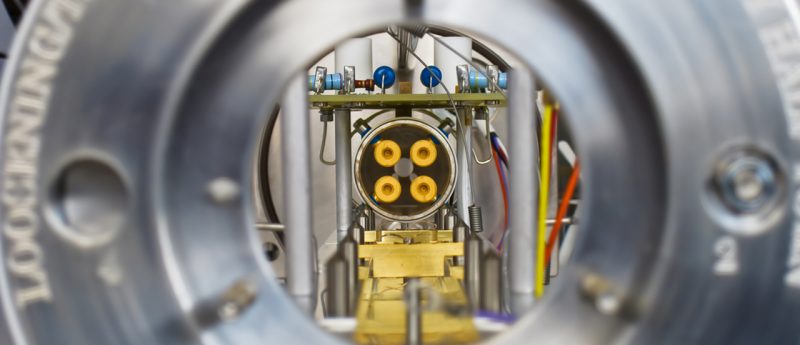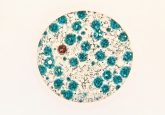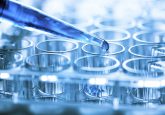From fundamental ion chemistry to differential mobility spectrometry: An interview with Larry Campbell from SCIEX

Could you please introduce yourself?
My name is Larry Campbell and I am a Research Scientist with SCIEX (MA, USA).
Could you provide a brief summary of your career to date?
I obtained my PhD in Chemistry from Purdue University (IN, USA) specializing in fundamental ion chemistry using mass spectrometry. After a post-doctoral fellowship in proteomics at the University of Western Ontario (ON, Canada), I joined SCIEX in 2007 as a Product Applications Chemist. I later joined the R&D team at SCIEX and have been with the company for over 10 years.
What began your interest in ion mobility technology?
My interest in ion mobility really took off with the launch of SCIEX’s SelexIONTM differential mobility spectrometry (DMS) technology. Having a background in fundamental ion chemistry, I realized that this technology could accomplish some very remarkable feats by its ability to tap into ion chemistry and physics in ways other forms of ion mobility technology cannot. In addition, there were so many possible applications that could benefit from the separation power provided by DMS, I couldn’t help but be very excited and drawn to this science!
Describe the SelexION® technology, what are the advantages of this technique?
The SelexION® device brings differential mobility spectrometry (DMS) to the SCIEX QTRAP® and TripleTof® platforms in an easy to install and use device. The DMS cell is positioned in the atmospheric pressure region between the ionization source and the mass spectrometer’s sampling orifice, and consists of two parallel flat plates (10 x 30 mm, 1 mm gap). Between these two plates, an asymmetric radio frequency (RF) waveform (the Separation Voltage, SV) is applied. As ions enter the gap in the DMS cell and begin traveling down the length of the device, they can begin to take on a zig-zag trajectory as the RF waveform’s voltage rises and falls. These trajectories are determined by each ion’s different mobilities during the high field and low field portions of the applied RF waveform. It is these differences that provide ion separation for the SelexION® technology. As the ions migrate towards the walls of the DMS cells, their trajectories can be corrected back along the axis of the cell and towards the orifice by applying a second voltage (the Compensation Voltage, CoV). The uniqueness of each ion’s characteristic CoV measurement represents its ability to be separated by the SelexION® technology.
Volatile chemical modifiers can also be used with Selexion® technology, bringing an added degree of separation to analytical workflows. By adding molecules like isopropyl alcohol, methanol, and acetonitrile to the DMS transport gas (the curtain gas of the mass spectrometer), more dramatic DMS separation can be afforded to ions based upon the different binding affinities and clustering each ion encounters with a chemical modifier molecule. Not only is this use of ‘chemical effects’ a powerful method for separating isobaric and even isomeric ions from each other, the ions’ new CoV data has also been shown to encode other physicochemical properties of these molecules.
The application space for SelexION® technology is quite broad, ranging from the removal of isobaric and isomeric chemical noise in analytical workflows, the separation of lipid species based upon the chemistries of their respective headgroups, the separation of isomeric natural products that would otherwise require long liquid chromatography experiments to separate, and much more. For bioanalytical studies we have seen the SelexION® device used for challenging samples such as disulphide bonded peptides [1], cyclic peptides [2], and isomeric steroids [3] among others.
Communication and collaboration are really important in helping the field progress faster. What does SCIEX do to encourage collaboration?
SCIEX puts a big focus on fostering collaborations between its scientists and academic or industrial partners. By providing the necessary support and freedom to explore the frontiers of new instrumentation design or to investigate the latest challenge facing our customers, SCIEX sets the bar for establishing high-quality, very fruitful collaborations.
What further advances do you envisage with respect to differential mobility spectrometry in the coming years?
Advances in DMS will come from several avenues –
- Continued improvement and advancement of the DMS hardware, through new cell and electrical designs.
- Development of more and more DMS-based applications and workflows that take advantage of the separation power of this technology.
- Continued fundamental exploration of the unique and useful gas-phase ion chemistry that can take place between those two electrodes.
References:
[1] Xia Y-Q, Ciccimaro E, Zheng N, Zhu M. Differential mobility spectrometry combined with multiple ion monitoring for bioanalysis of disulfide-bonded peptides with inefficient collision-induced dissociation fragmentation. Bioanalysis 9(2), 183–192 (2017).
[2] Fu Y, Xia Y-Q, Flarakos J, Tse F.L.S, Miller J.D, Jones E.B, Li W. Differential mobility spectrometry coupled with multiple ion monitoring in regulated LC-MS/MS bioanalysis of a therapeutic cyclic peptide in human plasma. Anal. Chem. 88(7), 3655–3661 (2016).
[3] Campbell J.L, Le Blanc J.Y, Kibbey R.G. Differential mobility spectrometry: a valuable technology for analyzing challenging biological samples. Bioanalysis 7(7), 853–856 (2015).







